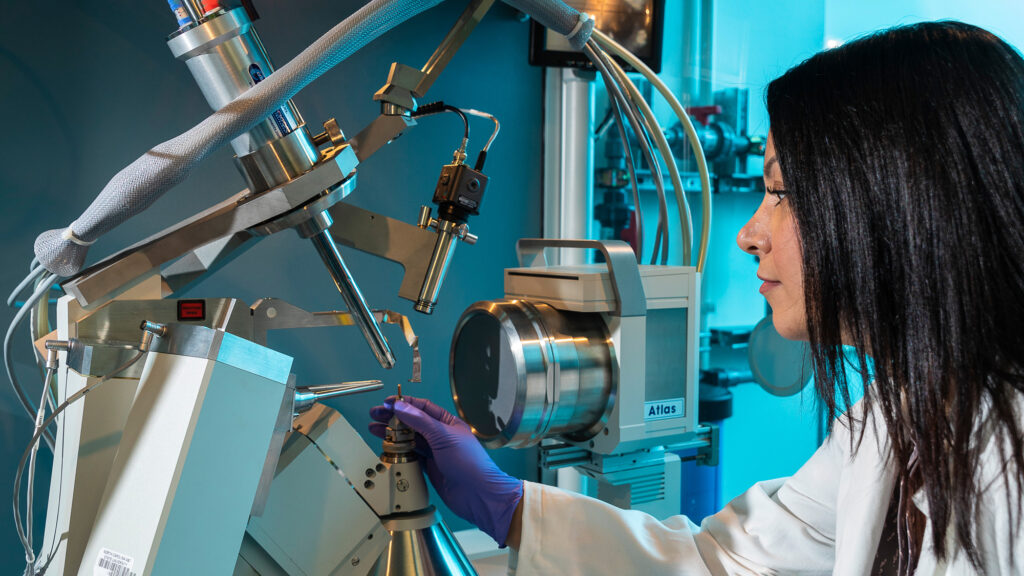Sherri McFarland in Chem/BioChem just received an NIH RO1 for her innovative cancer research. Congratulations on your award from the NIH National Cancer Institute for your project “Immunomodulating Ruthenium Metal Complexes for Melanoma Photodynamic Therapy”
Abstract: This proposal seeks to develop a novel class of ruthenium compounds that can be activated with therapeutic wavelengths of light to eliminate primary tumors, inhibit disseminated disease, and prevent recurrence. It is hypothesized that light-responsive prodrugs with these capabilities will be of use in the development of photodynamic therapy (PDT) for treating melanoma. PDT is an underutilized, niche cancer treatment modality that combines light and a photosensitizer (PS) to create cytotoxic singlet oxygen for destroying tumors and tumor vasculature. Although commonly thought of as a local treatment, PDT has been known to stimulate anti-tumor immunity, which is crucial for controlling metastatic disease and subsequent tumor regrowth. PDT relies heavily on the presence of oxygen to exert its antitumor effects, and the PSs approved for PDT are generally organic compounds that are activated with red light. In order for PDT to be maximally effective toward melanoma, it would be advantageous to develop PSs that can function well in hypoxic tissue with wavelengths of light that are least attenuated by the melanin in pigmented melanomas (650-850 nm). If such agents could be incorporated into regimens that stimulate antitumor immunity, PDT might offer new treatment options for highly recurrent cancers such as melanoma, where chemotherapy and radiotherapy do not work. We previously developed very potent metal-based PSs that combine ruthenium (Ru) and p-expansive ligands to yield systems that create cytotoxic reactive oxygen species even at low oxygen tension due to their long excited state lifetimes and large bimolecular quenching rates. Separately, we developed osmium (Os)-based PSs that absorb light at wavelengths longer than 800 nm and can generate a modest PDT effect with this low-energy light even in hypoxic tissue. This proposal will combine the best features of the Ru (potency) and Os (activation >800 nm) PSs to yield new Ru metal complexes that are designed to elicit a strong PDT effect with near-infrared light in hypoxic tissue using increasingly more sophisticated melanoma models. Coordination chemistry will be used to generate a library of modular 3D compounds that can be subsequently modified to produce structurally diverse families. The photophysical and photochemical properties of these new compounds will be fully explored, and they will be assessed for their diagnostic potential and PDT effects using 2D cell and 3D tumor spheroid melanoma models. Promising candidates will be selected for MTD determination and PDT studies in a mouse melanoma model. PSs that are PDT-active and nontoxic to mice will be probed for their abilities to induce antitumor immunity through tumor rechallenge experiments. Finally, the immunological aspects of favorable PDT responses in mice will be investigated using both in vitro and in vivo techniques, and the PDT regimen will be explored and optimized for maximizing both local tumor control and stimulating antitumor immunity. Completion of this project will introduce novel PSs for melanoma PDT and will expand fundamental knowledge of metal complex chemistry, photophysics, and therapeutic properties.





